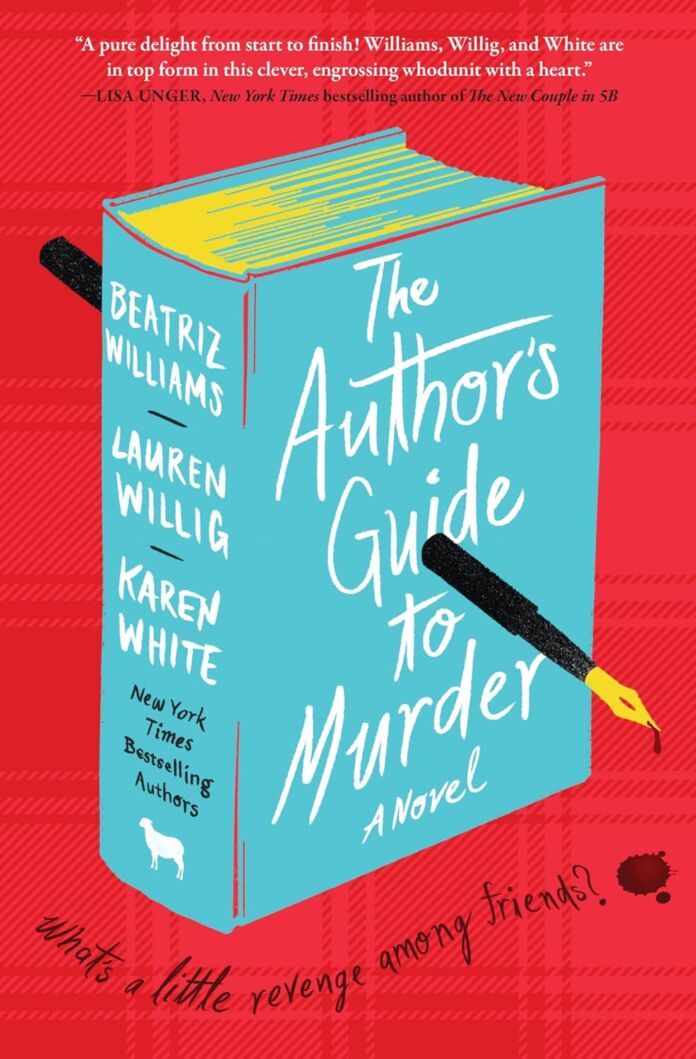In their latest collaboration, bestselling authors Beatriz Williams, Lauren Willig, and Karen White have crafted an ingenious locked-room mystery that doubles as a sharp-witted commentary on the publishing industry. The Author’s Guide to Murder seamlessly blends classic mystery elements with contemporary themes, creating a narrative that’s both nostalgic and remarkably timely.
Setting & Atmosphere
The authors masterfully bring Castle Kinloch to life, transforming it from a mere backdrop into a character in its own right. This remote Scottish castle, with its imposing granite walls and labyrinthine passages, provides the perfect gothic setting for murder. The atmospheric description of the castle’s various spaces—from the poison garden to the ominously named Obelisk—creates a deliciously creepy ambiance that pays homage to classic mystery novels while maintaining a distinctly modern edge.
Character Development
The three main suspects—Kat, Cassie, and Emma – are brilliantly drawn, each representing different facets of the contemporary publishing landscape:
- Kat de Noir, the edgy erotica writer with a carefully constructed facade and deep emotional wounds
- Cassie Pringle, the overwhelmed mom-of-six churning out cozy mysteries while trying to hold her marriage together
- Emma Endicott, the scholarly historical fiction author whose precise exterior masks profound vulnerability
What makes these characters particularly compelling is how they evolve from supposed “besties” to genuine friends as they navigate their shared trauma and the murder investigation. Their dynamics feel authentic, their banter sharp and entertaining, and their individual voices distinct—no small feat in a novel with three protagonists.
Plot & Pacing
The story moves at a brisk pace, alternating between present-day investigation and revelations about the characters’ past connections to the victim, Brett Saffron Presley. The authors skillfully weave together multiple storylines: the current murder mystery, the historical murder of “Naughty Ned,” and the complex web of relationships between the characters.
Strengths
- Intricate plotting that keeps readers guessing
- Well-executed parallel storylines
- Clever use of multiple perspectives
- Sharp dialogue and wit
- Rich atmospheric details
Areas for Improvement
- Some readers might find the initial setup slightly contrived
- A few plot threads could have been more fully developed
- The romantic subplots occasionally feel rushed
Themes & Social Commentary
The novel excels in its exploration of power dynamics in the publishing industry and its timely examination of #MeToo themes. The authors handle sensitive subjects with appropriate gravity while maintaining the novel’s overall entertaining tone. The exploration of female friendship and solidarity adds depth to what could have been a simple revenge tale.
Writing Style
The collaborative effort of three accomplished authors results in a seamless narrative voice that manages to honor each protagonist’s distinct personality. The prose is crisp and engaging, with moments of genuine humor balanced against darker themes.
Historical Elements
The parallel historical mystery involving “Naughty Ned” adds depth to the contemporary plot while providing fascinating glimpses into Scottish history. The authors’ research shines through without becoming didactic.
Comparison to Other Works
Fans of Lucy Foley’s The Guest List and Ruth Ware’s The Death of Mrs. Westaway will find familiar elements here, but The Author’s Guide to Murder carves its own unique niche by incorporating publishing industry satire and #MeToo themes.
Final Verdict
The Author’s Guide to Murder is a good read for its clever plotting, memorable characters, and skillful balance of serious themes with entertaining elements. While not perfect, it’s a highly satisfying mystery that offers both brain-teasing puzzles and emotional depth.
Who Should Read This Book
- Mystery lovers who enjoy classic locked-room puzzles with modern twists
- Readers interested in publishing industry insights
- Fans of smart, feminist fiction
- Those who appreciate gothic settings and atmospheric writing
Who Might Want to Skip
- Readers who prefer straightforward police procedurals
- Those sensitive to discussions of sexual harassment
- Readers who dislike multiple narrative perspectives
Impact and Relevance
The novel successfully addresses serious contemporary issues while maintaining its entertainment value. Its exploration of female solidarity and empowerment resonates particularly well in today’s social climate.
Author Background & Similar Works
Williams, Willig, and White have previously collaborated on several successful novels, including The Lost Summers of Newport and All the Ways We Said Goodbye. Their experience in various genres (historical fiction, romance, and mystery) enriches this latest work.
For readers who enjoy this book, I’d also recommend:
- The Thursday Murder Club by Richard Osman
- The Wife Upstairs by Rachel Hawkins
- The Paris Apartment by Lucy Foley
Conclusion
The Author’s Guide to Murder demonstrates how a traditional mystery framework can be used to explore contemporary issues while delivering satisfying entertainment. Despite minor flaws, it’s a compelling read that manages to be both thought-provoking and fun. The novel succeeds not just as a mystery but as a commentary on power, friendship, and the sometimes cutthroat world of publishing.





